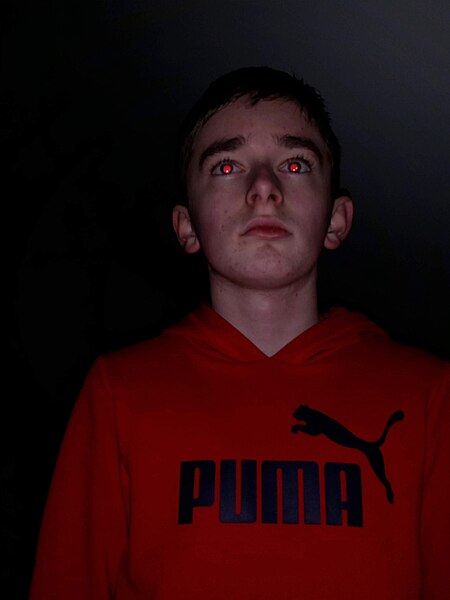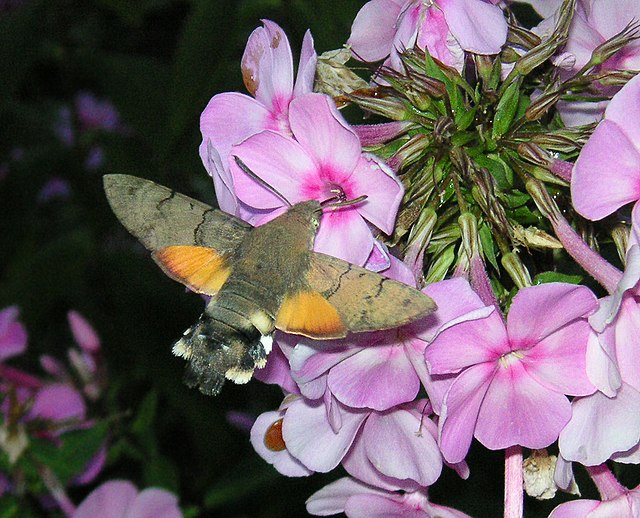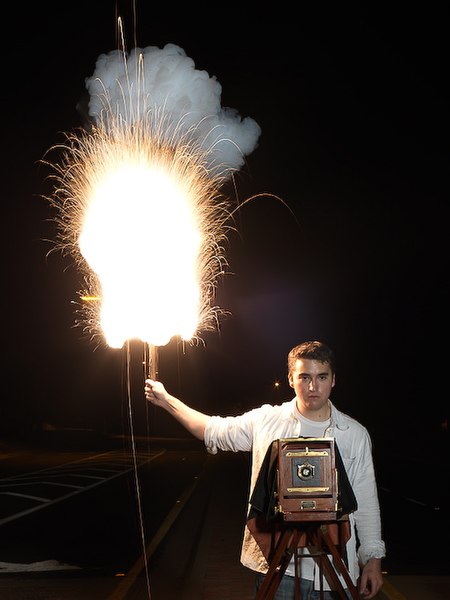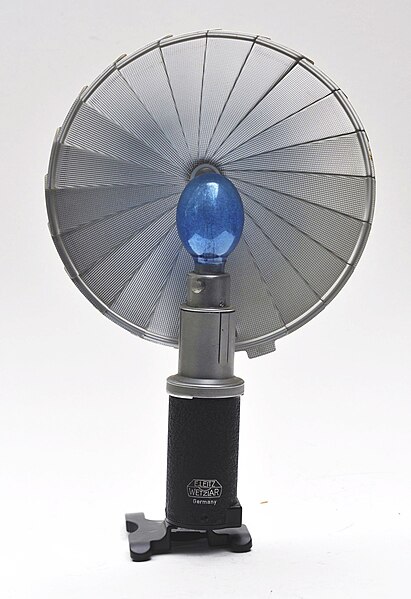The red-eye effect in photography is the common appearance of red pupils in color photographs of the eyes of humans and several other animals. It occurs when using a photographic flash that is very close to the camera lens in ambient low light.
Intense red-eye effect in blue eyes with dilated pupil
Red-eye effect seen on a teenager
Canon IXUS v3 Exposure time: 1/60 sec f/4
Spotted eagle-owl displays red-eye effect only on the eye facing the camera's ring flash
A flash is a device used in photography that produces a brief burst of light at a color temperature of about 5,500 K to help illuminate a scene. A major purpose of a flash is to illuminate a dark scene. Other uses are capturing quickly moving objects or changing the quality of light. Flash refers either to the flash of light itself or to the electronic flash unit discharging the light. Most current flash units are electronic, having evolved from single-use flashbulbs and flammable powders. Modern cameras often activate flash units automatically.
The high-speed wing action of a hummingbird hawk-moth is frozen by flash. The flash has given the foreground more illumination than the background. See Inverse-square law.
Demonstration of a magnesium flash powder lamp from 1909
Vintage AHA smokeless flash powder lamp kit, Germany
Ernst Leitz Wetzlar flash from 1950s








